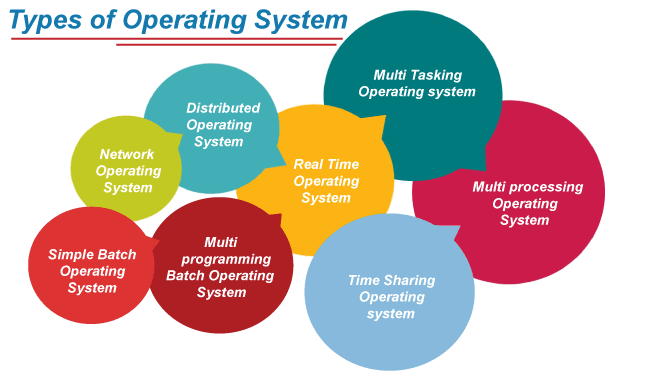
Sri Lanka school ICT – Grade 10 Lesson 5 is Operating Systems. After studying this chapter, you will be able to understand the following:
- The necessity of an operating system
- The function of an operating system
- user interfaces of operating systems
- services of an operating system
- types of operating systems
- advantages of operating systems
- Utility Programs of operating system
- drives, folders, and files.
You can get better practical knowledge by watching the given videos related to the topics mentioned in the syllabus of this lesson. By clicking on the relevant categories, you can see the description of the lesson related to the topic
? Learning Video Option 1 – Sinhala Medium – Play List Included 2 Videos
-

5 වන පාඩම | මෙහෙයුම් පද්දති - 1 වන කොටස | තොරතුරු හා සන්නිවේදනය | 10 වන ශ්රේණිය
-

5 වන පාඩම | මෙහෙයුම් පද්දති - 2 වන කොටස | තොරතුරු හා සන්නිවේදනය | 10 වන ශ්රේණිය
-

5 වන පාඩම | මෙහෙයුම් පද්දති - 3 වන කොටස | තොරතුරු හා සන්නිවේදනය | 10 වන ශ්රේණිය
-

5 වන පාඩම | මෙහෙයුම් පද්දති - 4 වන කොටස | තොරතුරු හා සන්නිවේදනය | 10 වන ශ්රේණිය
-

O/L ICT - Grade 10 - Past Paper Discussion - Operating Systems
Given below is a series of notes prepared in relation to your syllabus.
For an enlarged view of the Note ? Click Here
Related resources and links to this lesson
Text Book Lesson Note Download Questions MCq
A Computer consists of hardware, firmware, and software. Any physical component of a computer system with a definite shape is called hardware. Examples of hardware include a mouse, keyboard, display unit, hard disk, speaker, printer, etc. The booting instructions stored in the ROM (Read Only Memory) are called firmware. The initial text information displayed on the screen is displayed by firmware.
Learning Video – English Medium
Learning Video – Tamil Medium
An operating system (OS) is necessary for the following reasons:
- Resource management: Allocates hardware resources to various tasks and processes.
- Memory management: Coordinates and manages memory usage for optimal performance.
- Task scheduling: Determines which tasks are executed when and for how long.
- Security: Provides security features such as user authentication and data protection.
- User interface: Provides a user-friendly interface for interaction with the computer.
- Compatibility: Facilitates interaction between software applications and hardware components.
The primary functions of an operating system are:
- Resource management: Allocates and manages hardware resources such as CPU, memory, and input/output devices.
- Memory management: Coordinates and manages memory usage for efficient use and optimal performance.
- Task scheduling: Decides which tasks are executed when, and allocates CPU time to them.
- File management: Organizes, stores, retrieves, and tracks files and data on a computer.
- Security: Provides security features such as user authentication, data protection, and access control.
- Interfacing: Facilitates communication and interaction between the user, applications, and hardware.
There are several types of user interfaces for operating systems, including:
- Command line interface (CLI): A text-based interface where users type commands to perform actions.
- Graphical user interface (GUI): A visual interface that uses icons, windows, and graphics to interact with the computer.
- Hybrid user interface: A combination of CLI and GUI, offering features of both interfaces.
- Touchscreen interface: An interface that allows users to interact with the computer by touching the screen.
- Voice-based interface: An interface that allows users to interact with the computer using voice commands.
Examples of operating systems with each type of interface include:
- CLI: Unix, Linux
- GUI: Windows, MacOS
- Hybrid: Android, Chrome OS
- Touchscreen: iOS, Windows 8
- Voice-based: Siri (on Apple devices), Google Assistant.
There are several types of operating systems, including:
- Single-user, single-tasking: Designed to support only one user and one task at a time.
- Single-user, multi-tasking: Designed to support only one user, but able to run multiple tasks simultaneously.
- Multi-user: Designed to support multiple users, each with their own tasks running simultaneously.
- Real-time: Designed to respo
 nd to events in real time, with a deterministic response time.
nd to events in real time, with a deterministic response time. - Embedded: Designed for use in small, standalone devices with limited resources.
- Distributed: Designed to manage a network of computers, with multiple users and tasks.
- Mobile: Designed for use on mobile devices, such as smartphones and tablets.
Examples of operating systems in each category include:
- Single-user, single-tasking: CP/M
- Single-user, multi-tasking: MS-DOS, Mac OS 9
- Multi-user: UNIX, Linux, Windows NT/2000/XP/Vista/7/8/10
- Real-time: VxWorks, QNX
- Embedded: FreeRTOS, uC/OS-II
- Distributed: Sun Microsystems’ Solaris, Linux with clustering software
- Mobile: Android, iOS.
External Resources
https://edu.gcfglobal.org/en/computerbasics/understanding-operating-systems/1/


Leave a Reply